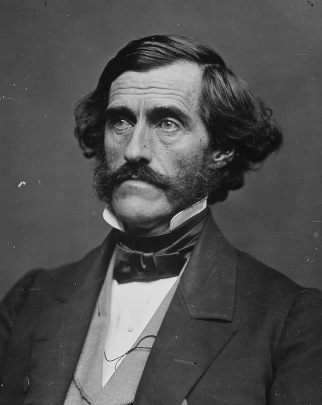Robert Feild Stockton
Four U.S. Navy ships have been named USS Stockton in his honor. The cities of Stockton, California and Stockton, Missouri are named in his honor as is the borough of Stockton New Jersey, Stockton Street in San Francisco, and including our city of Fort Stockton Texas, California Stockton Creek is named after him due to a mine he owned in the California Gold Rush. In Liberia, Stockton Creek, a tidal channel that connects the Mesurado River and the Saint Paul River, and that separates Bushrod Island from the mainland in Monrovia, is also named for him. Formerly Commodore Stockton Elementary School in San Francisco between Clay and Pacific Streets was named after him. Stockton Street in San Jose was named after him and his Garden Alameda San Jose neighborhood. In Sacramento, Stockton Boulevard is the historic thoroughfare linking Sacramento and Stockton, now superseded by Highway 99 and Interstate 5. Robert F. Stockton was born at Morven, Stockton Street, Princton, New Jersey, into a political family; his father Richard Stockton was a U.S. senator and representative, and his grandfather, Judge Richard Stockton was attorney general for New Jersey and a signer of the Declaration of Independence. Robert F. Stockton was of English descent, and his family had been in what is now the United States since the early colonial period. On March 4, 1823, he married Harriet Maria Potter in Charleston, South Carolina. Ten children were born to this marriage. Stockton was appointed a midshipman in the U.S. Navy in September 1811, shortly after his 16th birthday, and served at sea and ashore during the War of 1812. After that conflict, Lieutenant Stockton was assigned to ships operating in the Mediterranean, in the Caribbean and off the coast of West Africa. He was the first naval officer to act against the slave trade and captured several slave ships. In December of 1821, while commanding the U.S.S Aligator along the African Windward Coast, Lt. Stockton along with Dr. Eli Ayers of the American Colonization Society, negotiated a treaty that led to the founding of the state of Liberia. One source describes that he "leveled a pistol at King Peter's head and thereby convinced the latter to sell some of his territory". In 1838, Stockton resumed active naval service as a captain. He served in the European area, but took leave in 1840 to undertake political work. Offered the post of U.S. Secretary of the Navy by President John Tyler in 1841, he declined the offer, but worked successfully to gain support for the construction of an advanced steam warship with a battery of very heavy guns. This ship became USS Princeton, the Navy's first screw-propelled steamer. The ship was designed by John Ericsson. Stockton commanded her when she was completed in 1843. The ship was armed with two long 225 pounder wrought iron guns, called the "Peacemaker" and the "Oregon". Although he was the deviser of the defective gun, Captain Stockton's political influence allowed him to be absolved of all responsibility for the February 1844 explosion of the gun, the Peacemaker, on board the ship. The explosion killed two cabinet secretaries and several others. Cleared by the court of any wrongdoing in the explosion incident, Stockton was sent by President James K. Polk to Texas. Stockton carried with him Polk's offer to annex Texas, sailing on the Princeton and arriving in Galveston. Stockton's observations while in Texas made him aware of the looming war with Mexico, a fact he communicated directly to Polk once he arrived back in Washington. No vessel during the Mexican war was more useful than the Princeton in the Gulf of Mexico. The records of the Navy Department showed she performed more service than all the rest of the Gulf squadron put together.


